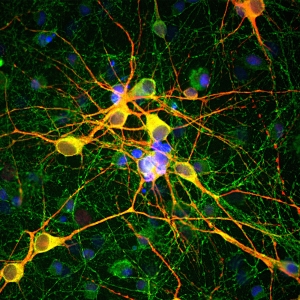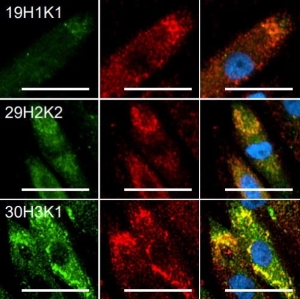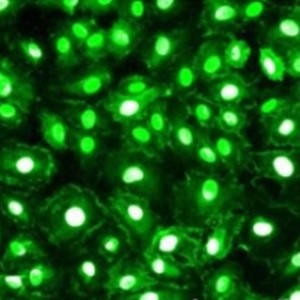Product Details
Product Sizes
| Size | List Price | Price | Cart |
|---|---|---|---|
| 100 ul | $303.00 | Add to Cart |
Tyrosine hydroxylase (TH) is a vital enzyme responsible for the generation of L-DOPA from the amino acid tyrosine. L-DOPA is the direct precursor of the neurotransmitter dopamine, and dopamine can itself be processed to produce the neurotransmitters adrenalin and noradrenalin (a.k.a. epinephrin and norepinephrin respectively). Neurons which use dopamine, adrenalin or noradrenaline, called collectively chatecholamines, must express TH. TH has a very restricted distribution in the brain but is highly expressed in the cells in which it is found. As a result antibodies to TH are useful for the identification of chatecholaminergic neurons. TH positive neurons in the rat are localized into clusters of cells most of which are in the brain stem, including notably the substantia nigra and locus ceruleus. Parkinson’s disease is caused by the loss of TH positive dopaminergic neurons in the substantia nigra, which are also relatively low in number, and perturbation of TH neurons has been implicated in Alzheimer’s disease and schizophrenia. GT22110 was made against full length recombinant human TH based on the 524 amino acid sequence in NP_954987.2, expressed in and purified from E. coli. The antibody works well on cells in culture and tissue sections. Product Highlights: |
Images
Immunofluorescent analysis of rat brain sections stained with goat pAb to tyrosine hydroxylase, GT22110, dilution 1:2,000, in red. The blue is Hoechst staining of nuclear DNA. GT22110 antibody strongly and specifically stains the striatal TH-expressing interneurons. Inset top left shows neuronal cell bodies and top right shows beaded process, while the main image shows an overview of the caudate/putamen and TH positive nerve fibers.
Western blot analysis of different tissue lysates using goat pAb to tyrosine hydroxylase, GT22110, dilution 1:2,000 in green: [1] protein standard (red), [2] rat brain caudate and putamen and [3] mouse brain caudate and putamen. The strong band at about 60kDa corresponds to TH protein.






